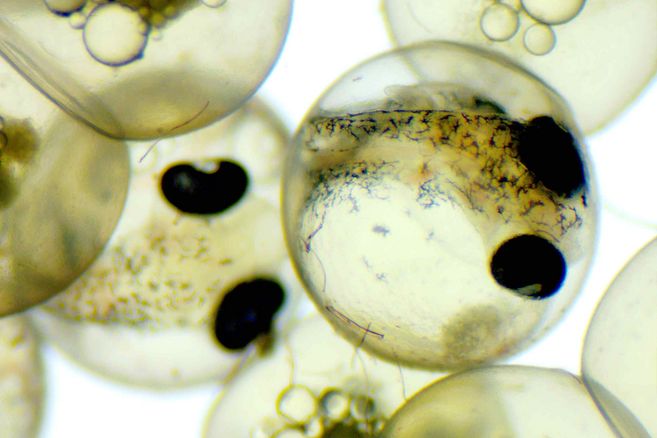

Institut für
FI Fischereiökologie
Dr. Daniel Koske

Instititut für Fischereiökologie
27572 Bremerhaven
Mitarbeiter 2016 bis 2020
Expertise
- Ökotoxikologie
- Schadstoffwirkung auf Embryonen des Zebrabärblings
Projekte
Beteiligt an
Laufende Projekte
Abgeschlossene Projekte
Publikationen
- 0
Achterberg EP, Andresen C, Beck A, Brenner M, Böttcher C, Cumming A, Czub M, Frey T, Kammann UKR, Kampmeier M, Koschinski S, Koske D, Köser K, Lang T, Lastumäki A, Lehtonen KK, Lundgreen K, Lindgren F, Lyjak J, Scharsack JP, et al (2024) Thematic assessment on hazardous submerged objects in the Baltic Sea : Warfare materials in the Baltic Sea. Helsinki: HELCOM, 151 p
- 1
Kammann UKR, Straumer K, Koske D, Scharsack JP (2021) DAIMON2: Decision aid for marine munitions - practical application. Bremerhaven: Thünen Institute of Fisheries Ecology, 1 p, Project Brief Thünen Inst 2021/18a, DOI:10.3220/PB1623067464000
- 2
Kammann UKR, Straumer K, Koske D, Scharsack JP (2021) DAIMON2: Entscheidungshilfe für Munition im Meer - Praktische Anwendung. Bremerhaven: Thünen-Institut für Fischereiökologie, 1 p, Project Brief Thünen Inst 2021/18, DOI:10.3220/PB1623067095000
- 3
Scharsack JP, Koske D, Straumer K, Kammann UKR (2021) Effects of climate change on marine dumped munitions and possible consequence for inhabiting biota. Environ Sci Europe 33:102, DOI:10.1186/s12302-021-00537-4
- 4
Kammann UKR, Koske D, Schmidt N (2021) Investigations on the importance of contamination from dumped munitions in the Baltic Sea for bottom-dwelling fish species. Bremerhaven: Thünen Institute of Fisheries Ecology, 1 p, Project Brief Thünen Inst 2021/06a, DOI:10.3220/PB1613387762000
- 5
Kammann UKR, Koske D, Schmidt N (2021) Untersuchungen zur Bedeutung der Schadstoffbelastung aus versenkter Munition in der Ostsee für Bodenfischarten. Bremerhaven: Thünen-Institut für Fischereiökologie, 1 p, Project Brief Thünen Inst 2021/06, DOI:10.3220/PB1613387007000
- 6
Koske D (2020) Dumped munitions: Effects, metabolism and detection of explosive compounds and chemical warfare agent-related chemicals in fish from the Baltic Sea. Kiel: Univ Kiel, 185 p, Kiel, Univ, Diss
- 7
Koske D, Goldenstein N, Rosenberger T, Machulik U, Hanel R, Kammann UKR (2020) Dumped munitions: New insights into the metabolization of 2,4,6-trinitrotoluene in Baltic flatfish. Mar Environ Res 160:104992, DOI:10.1016/j.marenvres.2020.104992
- 8
Koske D, Straumer K, Goldenstein N, Hanel R, Lang T, Kammann UKR (2020) First evidence of explosives and their degradation products in dab (Limanda limanda L.) from a munition dumpsite in the Baltic Sea. Mar Pollut Bull 155:111131, DOI:10.1016/j.marpolbul.2020.111131
- 9
Niemikoski H, Koske D, Kammann UKR, Lang T, Vanninen P (2020) Studying the metabolism of toxic chemical warfare agent-related phenylarsenic chemicals in vitro in cod liver. J Hazard Mater 391:122221, DOI:10.1016/j.jhazmat.2020.122221
- 10
Koske D, Goldenstein N, Kammann UKR (2019) Nitroaromatic compounds damage the DNA of zebrafish embryos (Danio rerio). Aquatic Toxicol 217:105345, DOI:10.1016/j.aquatox.2019.105345






